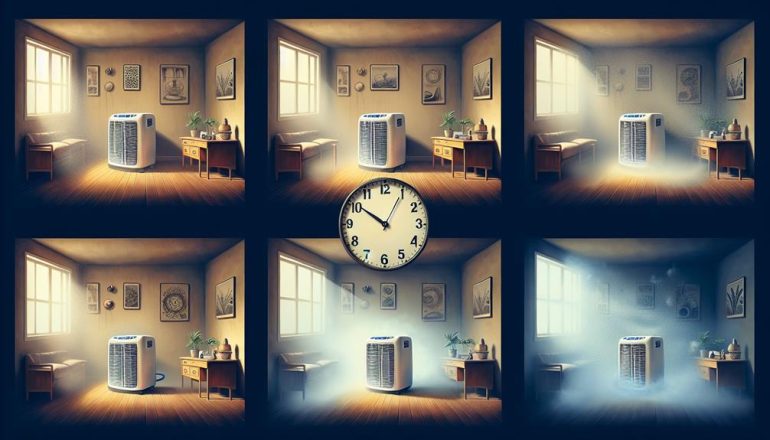Wondering about the time frame to manage your moisture menace effectively? Well, if your chosen dehumidifier is cut out for the size of the space it needs to tackle and there’s no lure of particular damp issues, you can typically anticipate a significant dip in humidity levels down to your preferred point, in just several days to a week.
While we’d all love our appliances to work at the snap of our fingers, the reality is that your dehumidifier’s effectiveness is not just about switch-on time. It’s more about the interplay of factors like the size of your space, the initial humidity level, and even the particular model of the dehumidifier you’ve chosen.
So, how much does it take for your dehumidifier to do its job? To answer that, we need to explore how these factors come into play.
What’s the Duration for a Dehumidifier to Dry Out a Room?

If you’re looking to thoroughly dry out a room using a dehumidifier, it’s necessary to understand that the process typically takes between 24 and 72 hours depending on the conditions of the room.
The size of the room, the level of humidity, and the extent of water damage all play an integral role in determining how long you should run a dehumidifier.
Remember, a dehumidifier works by extracting moisture from the air, aiding in the drying process. It’s essential to continue the dehumidifier use until the humidity levels return to normal.
Monitoring these levels will help you determine when it’s time to stop. Sometimes, if the area is unusually damp, you may need to use the dehumidifier longer to maintain relative humidity and improve air quality.
Evaluating the Advantages of a Dehumidifier Following a Flood Encounter
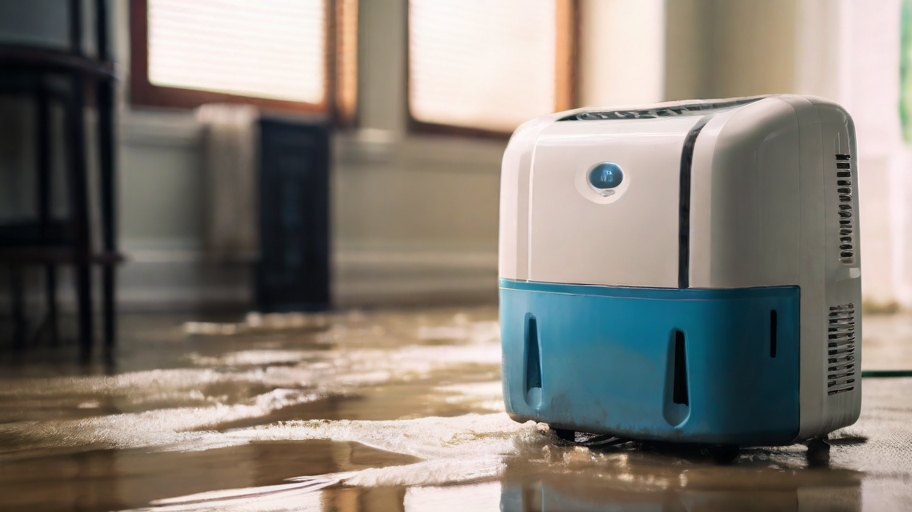
In the aftermath of a flood, it’s binding to assess the benefits of a dehumidifier, as this device can effectively reduce moisture buildup and help prevent mould growth when used consistently for at least 48 hours.
When you use a dehumidifier for the first time, it may take a few hours to days to noticeably decrease humidity levels, especially in water-damaged areas. Be sure to check the water tank frequently and empty it as needed.
Running your dehumidifier continuously can help expedite the drying process. Remember, the dehumidifier may not completely dry severely soaked areas, so professional assistance might be necessary.
Timeframe for Drying a Room Post-Flood: What to Expect
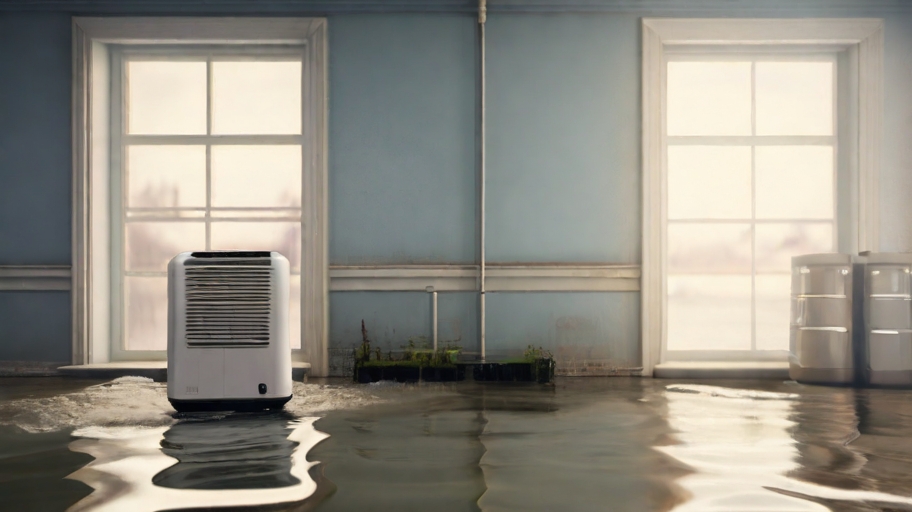
After setting up your dehumidifier in a post-flood situation, you might wonder how long it will take to fully dry out the room. This depends on several factors:
- The size and capacity of the dehumidifier: Larger units will dry a room faster.
- The level of humidity: More moisture means a longer drying time.
- The room’s ventilation: Better ventilation aids in drying.
- The external weather: If it’s humid outside, your dehumidifier takes longer.
Operating the dehumidifier continuously and keeping doors/windows closed can speed up the process. Typically, you can expect a timeframe of a few days to a week for drying a room post-flood. Keep your dehumidifier running to maintain optimal humidity levels.
How Long Does It Take For a Dehumidifier Following a Leak?
When dealing with a water leak, it’s critical to run your dehumidifier for at least 48 hours to prevent the growth of mould and ensure the area is properly dried out. The dehumidifier works to remove excess moisture from the air, a process that’s likely to take a few days depending on the amount of moisture present.
This timeline can vary based on the severity of the leak and the humidity levels in your space. Your dehumidifier’s moisture removal effectiveness is also influenced by factors like room layout and external humidity.
For severe leaks, it’s recommended to seek professional help to ensure thorough drying. Remember, consistent use of your dehumidifier is key to preventing mould formation and maintaining a healthy environment.
Can a Dehumidifier Successfully Dry Damp Walls?
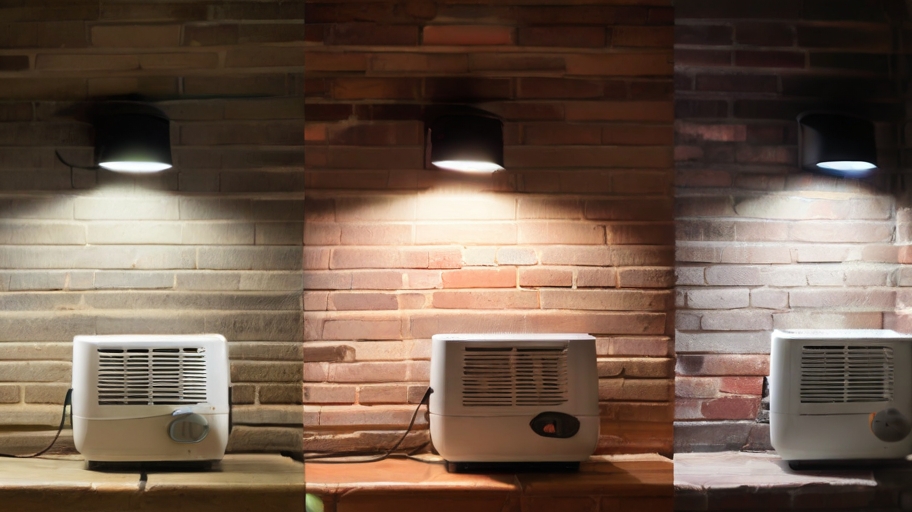
Drawing from our understanding of dehumidifiers’ role following a leak, let’s now explore whether these devices can effectively dry damp walls.
First off, you should know that a dehumidifier can indeed help to dehumidify walls, reducing humidity levels, condensation and the dampness that promotes mould expansion.
Here’s what it does:
- Lowers the moisture in a room, making it harder for dampness to persist on surfaces.
- Discourages mould development by maintaining a less hospitable environment.
- Improves air circulation when placed near windows and doors, speeding up the drying process.
- Can work continuously, helping to prevent mildew and maintain a healthier living space.
Navigating Mold Prevention Following a Flood: Your How-To Guide
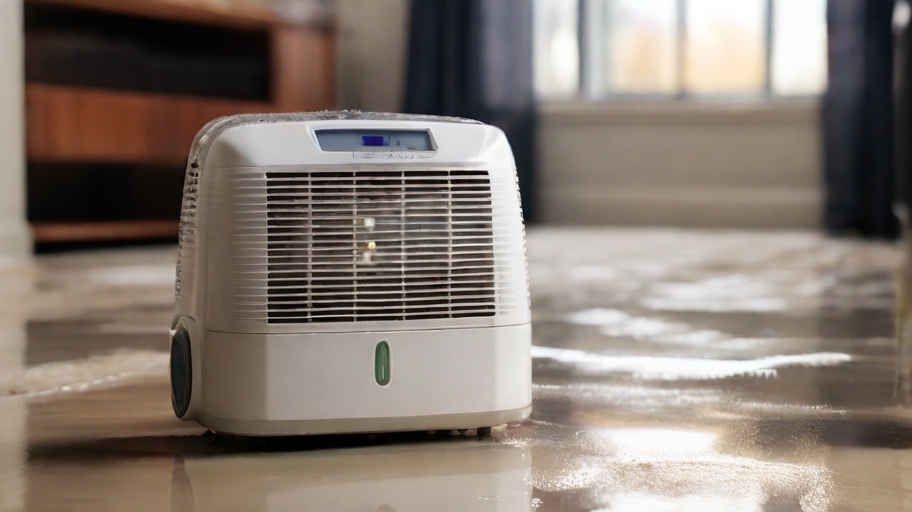
In the wake of a flood, it’s weighty to take immediate and effective steps towards mould prevention to maintain a healthier living environment. A dehumidifier is a key tool in this process as it removes moisture from the air, significantly reducing high humidity levels that can cause mould.
First, remove any standing water and damp items. Then, set up the dehumidifier in the most affected area. You should see improvements within a few days. However, if you notice persistent dampness or mould growth, seek professional assistance.

